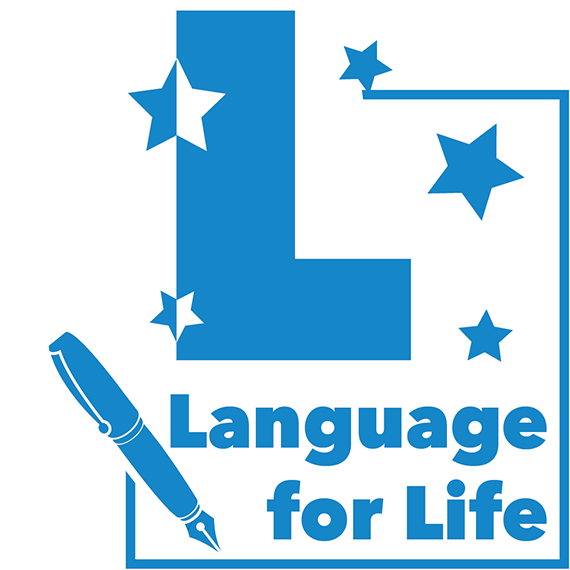Language for Life Online Course (PD340)
Category Online Courses
Tags dictionary, grammar, morphology, teaching
Language for Life Online Course (PD340)
US$190.00
I want to teach grammar: where do I start?
Every English poet should master the rules of grammar before he attempts to break them.
Robert Graves
At my practice, Lifelong Literacy, we have always had enormous fun with lessons about word power. The fact that my students have returned week after week makes me think that they have had fun learning it. As usual, tailor-making programs for hundreds of students began to grow into something else. All the facts were distilled and became a useful program. I’ve called it Language For Life. Our Language for Life Online course has been popular with educators worldwide since 2014. Note: Prices are inclusive of 10% Goods and Services Tax (GST) for all Australian residents. Here’s what some of the graduates have been saying:“This is a great course. I found it was a useful tool to remind myself of the different parts of speech, and it provided me with confidence to teach this to my students. I found the marking of the universals and the parts of speech within a passage of writing a great tool to build an understanding of grammar and look forward to teaching that more explicitly. I really enjoyed this course. Thank you.”P.T. – Primary teacher
“I really enjoyed the structure of this course and can appreciate how this would help teachers to tackle morphology with their students. I will be referring back to the resources in my work with teachers to support student learning.”E.M. – Speech Pathologist
“I found the course very useful and informative. Some of this course was great revision but I also found I learnt new skills. The way it was set out displayed the steps needed to slowly build an understanding of grammar. I have already begun to implement these with my grade during remote learning and look forward to using it face to face. This course was very valuable. Thank you.”B.P. – Primary teacher
“I agree with B.P. This has been informative. It highlighted to me the complexity facing us both from an instructional and learning perspective. This needs to be something we continue to reflect on ensure we are providing our students with the appropriate building blocks to enhance their understanding as they progress through the school.”A.S. – Primary teacher
“This is a great course. I found it was a useful tool to remind myself of the different parts of speech, and it provided me with confidence to teach this to my students. The worksheets and scripts are fabulous – easy way to start introducing these concepts to students and I’m sure will help me to develop my own confidence in this area.”S.S. Primary teacher
Course outcomes
By the end of this eight-hour course, you should:- be able to define the six main parts of speech and show how they relate to one another in sentences,
- know how to teach all the parts of a dictionary to students,
- have an understanding of prefixes, bases and suffixes.
Course format:
It is completely self-paced but will be moderated in real time by Lyn and the Lifelong Literacy team.Part 1: The parts of speech
Learn how to define and teach each major word category and how each one interacts with others in sentences. Go beyond ‘a noun is a naming word, a verb is a doing word, an adjective is a describing word…’ to uncover the characteristics and behaviour of words in utterances. We will cover:- nouns
- determiners
- pronouns
- verbs
- adjectives
- adverbs
- prepositions
- conjunctions
Part 2: How to use a dictionary
Are paper dictionaries obsolete? With sophisticated search engines and online dictionaries in our lives, there are certainly grounds for arguments in the affirmative. My conclusion is twofold:- At the time of writing, paper dictionaries were still very much present in classrooms.
- Both online and paper dictionaries are organised in the same basic way.
Part 3: Morphology in Depth
‘For every word a child learns, we estimate that there are an average of one to three additional related words that should also be understandable to the child, the exact number depending on how well the child is able to utilize context and morphology to induce meanings.’ (Nagy & Anderson, 1984, p. 304) This entire topic is dedicated to morphology, but without knowing the parts of speech and how to use a dictionary, morphological study is limited. We will discover prefixes, base words and suffixes here. COURSE MATERIALS:- a 40 page worksheet resource,
- a cumulative guide to implementing each lesson, with scripts and teacher notes
- a K-6 scope and sequence outlining when and how to teach parts of speech and morphemes for the first six years of formal schooling
- access to the full suite of Language for Life course materials for three months from your first sign-in.
…or we can come to you!
To book live Language for Life workshop for your school, please contact us. We can organise face to face or Zoom-based in-services for your team. IMPORTANT NOTE ON COURSE ACCESS Course access is for three months. If you find that you need to extend your access, you can purchase extensions, month by month, for AUD$20 using this link.If Paying by Invoice
Please choose the invoice option and we will send you an invoice. To ensure your place, you will have seven days from invoice date to pay.
